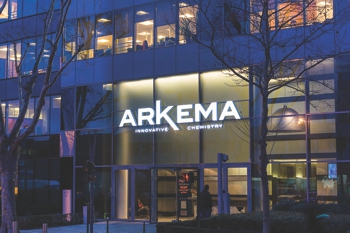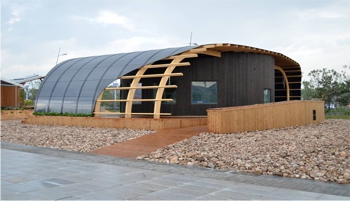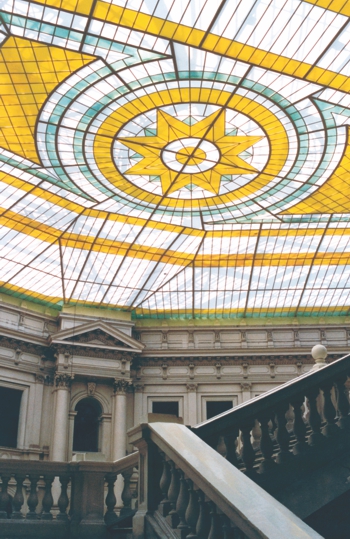PaperlinX Visual Technology Solutions




Frank Moran, Managing Director at PaperlinX Visual Technology Solutions, reveals the biggest mistake a sign manufacturer can make is opting for the wrong materials for the job.
While it may seem like an easy one to avoid, sign makers are often lured towards lower quality products on account of the lower price point. Ultimately, this can lead to a poor quality job that rules out the chance of any repeat business, and can actually end up costing the sign maker money rather than saving it. “We always advise sign makers to use your supplier to help find the best fit for the sign,” Frank explains. “Talk to them and get their specialist teams to support you in the selection process.”
There are many factors to be taken into consideration when it comes to picking materials, the cost being chief among them. Aside from budget, Frank reveals that sign makers should consider the purpose of the material, the type of sign, and installation among other factors when selecting sheet materials. “Sign makers have to look at installation criteria, for example height, exposure, whether it’s an indoor or outdoor sign, fire certification, if it is to be illuminated or not and its expected service life,” he says. “Speed of manufacture, the sign maker’s equipment, physical size of the job and general capabilities also have to be considered.”
The requirements from the end-user will also contribute to deciding which materials are suitable, and as such Frank recommends discussing things like corporate social responsibility objectives to help narrow down the options, as this will determine whether or not an environmentally friendly product is required. With many businesses looking to reduce their carbon footprint, offering signs made on recyclable, environmentally-friendly materials can help win contracts.
As an increasing number of clients are looking to integrate LED illumination into signage, Frank also recommends talking through the desired effect of the sign to make sure the design meets the mark. “Adding in LED illumination by modules can really enhance signage. For example, ‘halo’ and ‘shadow’ creates a stunning sign effect,” he says. “The right LED option can maximise light, minimise sign running costs and reduce signbox manufacture times - a benefit for everybody. And, Lumex polyesters print fantastically well on UV printers if the design calls for this.”
Examining the available options
When it comes to selecting the right sheet materials, there’s no shortage of products from which to choose.
Indeed, the many new products and improved materials present a plethora of options, which can often make selecting the right sheet confusing. Frank has numerous recommendations when it comes to favourite products, including Altuglas acrylic. It comes in numerous colours, and with high-quality effects such as ultra-bright or soft fluorescents, which perform particularly well when enhanced by LED lighting. Altuglas Night and Day is a great option for signage that needs to be clear and visible 24/7. The material, available in four colour combinations, adapts to the light conditions to be for example black during day when it’s bright outside, and light at night to illuminate the darkness. This versatile product is UV-resistant, and can be thermoformed for use in even complicated sign designs. “Altuglas also has a large colour range in constant light transmission (transparent, translucent and opaque) including the latest product range of LED opal and colours,” adds Frank.
For sign applications that require a high level of brightness and a Class 1 fire rating, Frank recommends the Lexan SG305OB (Sign Grade) polycarbonate sheets. “They’re very good to print directly on to,” he says. Reynobond and Skybond ACM are versatile choices that print well and can even be 3D shaped. Finally, Frank recommends Foamalux Foam PVC on account of it being a great multi-purpose material.
Getting the perfect finish after cutting the material is equal parts skill and selecting the right tools. While certain substrates can be cut and finished by hand with a hand-held router, others work best with a CNC router, such as ACM, foam PVC, polyesters, acrylics and polycarbonates. To get a clean cut and professional finish, Frank advises working from a smart design and layout on high-quality products. “Source quality materials from a reliable supplier, don’t use a live job to practise on, and don’t rush it!”
When it comes to selecting the right self-adhesive for digital printing, Frank recommends giving consideration to the application and the choice of vinyl to avoid expensive mistakes and wastage. “All too often corners are cut to save pennies,” he says. “When it comes to finishing and applying a digital print, there some new and innovative products that make the job much easier, even for the complete novice. Examples of this are Window Grab, Easy Dot and Ultraflat.”
Ultimately, getting the right finish starts with getting your project off to the right start. Researching the many new (and existing) sheet materials available will help you select the right type for the job at hand, even if it means parting with a few extra pennies to get the best products available. “Ask your materials supplier for advice,” advises Frank. “Stretch the budget, pay a bit more for quality - it makes for a much better end result.”
To learn more, visit www.paperlinx.co.uk.
